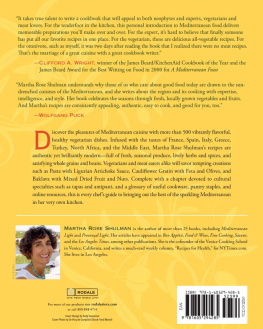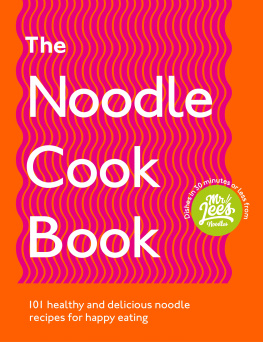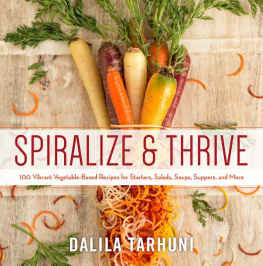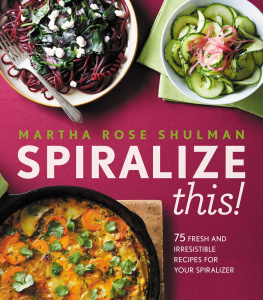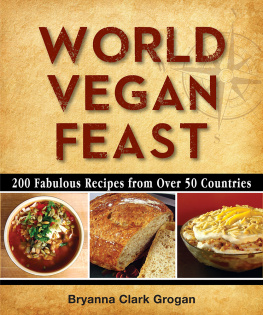


Copyright 2016 by Martha Rose Shulman
All rights reserved
For information about permission to reproduce selections from this book, write to or to Permissions, Houghton Mifflin Harcourt Publishing Company, 3 Park Avenue, 19th Floor, New York, New York 10016.
www.hmhco.com
Library of Congress Cataloging-in-Publication Data is available.
ISBN 978-0-544-91367-7 (hbk)
ISBN 978-0-544-91368-4 (ebk)
Book design by Waterbury Publications, Inc.
v1.1016
To my sister, Melodie


CONTENTS
INTRODUCTION
Now I get it! said my sister, Melodie. Its not that I dont like cooking; its chopping I dont like!
My sister, who has celiac disease and has not eaten gluten for years, was staying with me in Los Angeles, recovering from a fractured tibia that she suffered in a cycling accident. I was madly testing recipes for this book, and she was my willing eater. One beautiful and delicious dish followed another, and she was hookedas was Ion this simple kitchen tool.
The spiralizer is much more than a gadget for turning vegetables into strands that can stand in for noodles in pasta dishes, a boon for those who love pasta but have a problem with wheat or carbs. Its a great prep tool for all sorts of vegetablesonions to potatoes, winter squash, zucchiniand far from limited to transforming them into pasta. Pass an onion through the fine blade and youll get the thinnest slices possible in less than a minute, with no tears! When I was testing recipes, I diced and sliced innumerable potatoes, beets, zucchini, and peppers for frittatas and gratins, stir-fries and tacos, kugels and fajitas in no time. And it was fun. The tool is like a simplified version of a mandoline, but you dont risk cutting off the tip of your finger when you use it.
When I was working on this book, I lost weight. I didnt need to or mean to lose weight, but I was eating a very satisfying diet with the calories coming mainly from vegetables. If weight loss is a goal, start cooking your way through the recipes in this book, and you will find yourself on a healthy diet without even being aware of it. There is nothing ascetic or restrictive about the recipes. But the fact that they are produce-centriceven those recipes that include eggs, dairy, cheese, and meatmeans their calorie loads and glycemic indexes are low.
I didnt need to be eating more produce, but the spiralizer inspired me to create meals that had vegetables at their core. Every time I went to the market, Id look at produce with a new eye. Oh, I bet that would be fun to spiralize, Id say as I grabbed items that Id never paid much attention to before. And with that Id come home with a bag full of kohlrabi that would end up as a delicious, creamy slaw that got wrapped into my chicken taco ().
It has always been my firm belief that the key to healthy eating begins with preparing your own meals. That is how you take control of what you eat. If, like my sister, you find kitchen prep work tedious, the spiralizer will help you enjoy cooking a little more. Not only does prep go quickly, but the cooking time for spiralized vegetable pasta strands is shortonly 1 minutes, 2 at most. This collection will inspire you to get into the kitchen and cook.
ABOUT THE RECIPES
The spiralizer has been associated with cooks who wish to eliminate grains and animal proteins from their diet. But these recipes are designed for a broader spectrum of eaters and cooks. I am neither vegan nor gluten-free, paleo nor strictly vegetarian (though the focus of my cooking is often meatless). I am a cook who has always had a healthy focus, and to me that means a dedication to a balanced diet with produce at its core.
The recipes in this book put produce front and center. Some of them are vegan, most are gluten-free, and many are suitable for those who follow a paleo diet. The dishes are meant to be appealingeven irresistiblefor people who do not, as well as for people who do, eliminate certain food groups from their diet. For those who dont eliminate animal protein, there are plenty of wonderful dishes with eggs and cheese, as well as a few meat and fish recipes. There are also some sugary desserts. They belong here because the spiralizer makes them so much fun to prepare, and the results are gorgeous and delicious. The repertoire you will come away with is light and healthy. It will bring vegetables into your life and into the lives of your family and friends in ways you may have never imagined.

BASICS
There are two types of spiralizers on the market: smaller hand spiralizers and larger freestanding models. I find hand spiralizers more difficult to use than the freestanding models. Their one advantage is that they work a little better for thinner vegetables like carrots and broccoli stems, which are too thin to go through the freestanding models. Because spiralizers are not very expensive, I recommend having both.
Some hand models have a single blade and others have twoone for very fine shredding and one a little thicker. The standing spiralizers have an additional slicing blade, and some models have more than two sizes for shredding. My spiralizer came with three blades: the fine shredder blade, the coarse chipper blade, and the slicer blade. The slicer blade makes beautifully uniform, very thin slices, as well as flat, wide spiralized noodles that can stand in for pappardelle. Models with an additional blade have an angel hair blade.
HOW IT WORKS
The standing models affix to your work surface on suction cups. Place a sheet pan or a wide shallow bowl at the end to catch the spiralized vegetables, unless you use a spiralizer that comes with a catching vessel.
Affix the center of the vegetable or fruit on one end to the circular hold in the center of the blade (which also acts as a coring blade), and the other end to the pronged clamp. As you turn the crank, the item moves against the blades as the center moves through the hole (sort of like a pencil in a pencil sharpener), and long, curly strands or slices fall into the bowl or sheet pan. Once the vegetable or fruit has gone through as far as it will go, youre left with a mushroom-shape solid bit consisting of the middle that moved through the tube and the end affixed to the holder. You can use this for another purpose or cut it by hand.
An irregular shape piece of produce, like a curved zucchini or summer squash, will not move in a straight line through the spiralizer, and you will not get strands but rather curved C-shape pieces. This can be frustrating if your aim is long noodles. When you see this happening, stop spiralizing, pull the vegetable off the spiralizer, cut away the bit that went through the tube, and reposition the vegetable so it is centered. If you do get lots of C-shape pieces, just use them as you would shorter pasta shapes like fusilli. Or use them in other dishes like gratins and salads.


